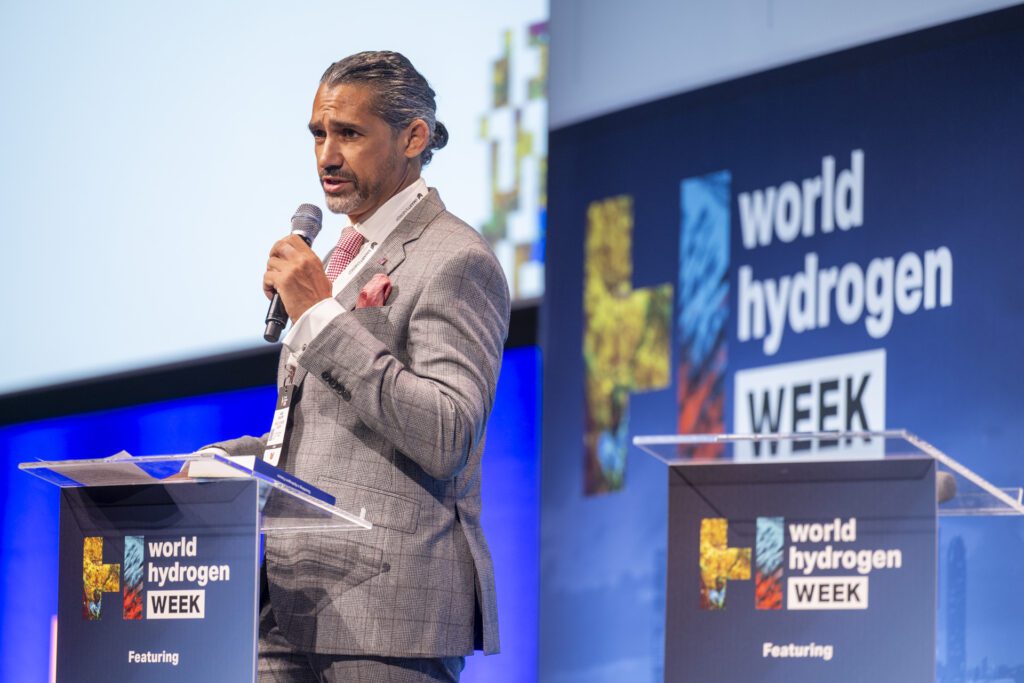Materials
Advanced materials: 2025’s breakthrough year and what comes next in 2026
Reading time: 5 mins
With only around 10% of clean hydrogen projects under construction or having reached the final investment decision stage, what are the challenges and likely pathways to success?
For all the excitement surrounding clean hydrogen, few project financing deals have actually been realised.
Energy transition enthusiasts expected 2023 to be the year when clean hydrogen went from concept to reality with a surge of government subsidy programmes anticipated, virtually guaranteeing profitability for clean hydrogen projects.
Unfortunately, the vast majority of these projects took longer to implement, delaying final investment decisions (FID) by developers. Industry experts and governments have also become more realistic about the cost of producing clean hydrogen and how it should be utilised – concluding that it should be reserved for sectors where electrification isn’t a viable energy source or is hard to implement at scale, at least until it becomes cost-competitive with other energy sources.
The International Energy Agency (IEA) has recently cautioned that clean hydrogen production is expected to grow more slowly than initially expected.
Last year, the IEA highlighted a combination of policy and regulatory uncertainty, high costs, lack of infrastructure and uncertain demand for the final product (i.e. offtaker agreements) and advised that to keep climate goals on track, an estimated 70 million tonnes of clean hydrogen would be needed per annum by 2030. This compares to around only 1 million tonnes being produced today.
At the current rate of around 1,400 announced projects to date globally, we are looking at only 45 million tonnes annually by 2030. And of those that actually have investment locked in, the figure falls to less than 3 million tonnes. According to the Hydrogen Council, a total investment of $570 billion is needed for those anticipated 1,400 projects, yet only a quarter of projects with known commissioning dates have progressed past FID stage, representing 7% of the total announced investments.
However, the past 12 months has seen some dramatic changes across the macro-economic and political landscapes that have likely added to obstacles and adverse conditions affecting imminent clean hydrogen delivery.
“To keep climate goals on track, an estimated 70 million tonnes of clean hydrogen would be needed per annum by 2030”
Some of the bigger, global influences include the rise of populist governments which question climate warming data as well as energy-intensive companies rowing back on the pace of their transition plans. These have added to ongoing challenges over electrolyser technologies, unsuccessful hydrogen auctions and supply chain issues.
Following the supply chain disruptions and political tensions emerging from the Russia-Ukraine war, inflation became a major concern for many industries. With more nations reducing their reliance on Russian gas and looking towards energy self-sufficiency, there has also been an increased demand for raw resources (particularly steel and copper) for renewable development, which has been exacerbated by logistics issues. While these higher costs of construction have not had much impact on assets already in operation (as costs are typically hedged at the time of FID), inflation risk remains in the growth pipeline, where tariffs have been approved but the project itself hasn’t been confirmed and costs are not yet locked in.
Inflation predictions are likely to mean that future projects become more expensive, particularly those with multi-year construction periods, where assets are valued at the start of the construction period. While developers will no doubt factor this in, they are likely to be confronted with increased insurance premiums.
In addition to offtake security, financiers have to account for technology risks and major infrastructure challenges, including development of storage facilities, delivery pipelines and liquefaction plants – as well as sufficient sources of water and renewable energy as feedstock. And these risks need to be allocated in a way that project financiers understand. Financial institutions need to be confident of loan repayments which can take the form of predicted revenue streams, along with other vehicles such as collateral asset packages serving as security, insurance backing for troubled projects, and “on-time” delivery contract guarantees.
As there is currently a very limited merchant market for trading hydrogen and hydrogen derivatives, producers are facing a significant challenge when seeking to take out futures contracts to guarantee a price for their hydrogen. Banks remain skittish around the potential size of future revenue and in order to resolve this, projects requiring financing need to have bankable “offtake” schemes in place, often with offtake agreements in other market sectors – such as petroleum refining or ammonia production – where hydrogen has proved itself at scale.
Offtake agreements are a key contractual tool used to address market uncertainty. The agreements are contracts between the producer and a customer, often for pre-agreed volumes, pricing and periods of time. Such agreements may require the customer to take-or-pay, giving the producer a guaranteed minimum revenue, because the customer is obliged to pay for products even if they do not take delivery. Such certainty is often a prerequisite for a project to be able to access the financing required to make the construction of a hydrogen production facility economically feasible.
Clean hydrogen is expected to play an increasingly significant role beyond 2040 in a carbon-neutral energy system. This is particularly true for “hard to abate” (HTA) sectors where electrification is not possible or only partially possible. However, given the nascent stage of the sector, one of the key hurdles to establishing a global green hydrogen market will be the development of bankable offtake arrangements which regulate the sale, purchase, storage and supply of green hydrogen and its derivatives.
Yet according to BloombergNEF – which maintains a database of clean hydrogen offtake agreements – identified offtakers only account for just 7.9 million tons of hydrogen, and of this just 1 million tons per year is covered by binding contracts.
“Clean hydrogen is expected to play an increasingly significant role beyond 2040 in a carbon-neutral energy system”
Existing use cases for hydrogen, which today rely almost exclusively on fossil fuel-based hydrogen, may be among the first clean hydrogen opportunities to be financeable, because the offtake picture is already clear and is easier to model.
Such industries include the already existing market for ammonia, with several green ammonia projects proposed or in early stages of development. Petroleum refining is another sector where bankable early clean hydrogen projects are likely to emerge – particularly as refineries are among the largest users of hydrogen as a feedstock. Further success in these sectors would demonstrate that clean hydrogen is viable rather than theoretical, encouraging the scaling of a number of clean hydrogen technologies.
One of the world’s biggest climate challenges is decarbonising the other fossil energy uses that cannot be directly electrified using renewable power. Among these HTA sectors are major industries that rely on fossil fuels, either for high-temperature energy or for chemical feedstocks. These include iron and steel, cement, chemicals, and building materials, which together are responsible for approximately 30% of the world’s annual CO2 emissions.
Another HTA sector is heavy-duty transportation (for example trucking and shipping), which is harder to electrify than passenger transport because it would require enormous batteries that add to vehicle weight and take a long time to charge.
This gives rise to a conundrum: developing green hydrogen projects at scale will remain challenging without bankable forms of offtake agreements and, similarly, it will be difficult to negotiate bankable hydrogen offtake agreements without there being sufficient projects to establish an international market to trade hydrogen and its derivatives.
There is, however, a strong and growing appetite to invest in the production and supply of clean hydrogen globally. Those governments who remain committed to a net zero economy are keen to attract inbound investments for hydrogen projects in their jurisdictions. Despite the financial challenges, offtakers will ultimately be motivated to invest in clean hydrogen technologies as part of their plans to transition away from fossil fuels – which will be mandated by their governments’ decarbonisation commitments.

While from an economic viewpoint, the immediate future of clean hydrogen might have an uncertain pathway and not insignificant financial challenges to overcome, progress is still being made. Having been questioned in the early stages, it is now widely accepted that hydrogen will have a major role in the energy transition. For the latest critical insights on the hydrogen state of play, the global opportunities and challenges and to better understand the real potential for clean hydrogen, there is no better event than the annual World Hydrogen Week, due to be held this autumn in Copenhagen from 30 September to 4 October, where more than 3,000 world-leading hydrogen executives will meet to accelerate the hydrogen future.

Nadim Chaudhry is the founder of World Hydrogen Leaders.
Quantum
Reading time: 10 mins
Quantum
Reading time: 10 mins
Quantum
Reading time: 11 mins
Robotics
Reading time: 1 mins
Quantum
Reading time: 3 mins